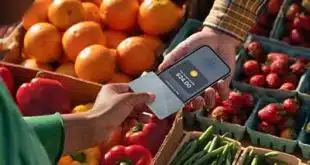Each year, Digital Transactions uses this space to lay out the problems impacting the payments industry. This time, the Covid-19 pandemic has inflected our coverage across a wide range of issues. The solutions will have to be far from business as usual.
2020 has been one of those years you can some day tell your grandchildren about. A robust start, featuring a strong economy and plenty of optimism for a big year in payments, and then—WHAM! Lockdowns forced people to stay at home and derailed what had been an economic express train.
Even when the economy ultimately reopened, fear of infection conditioned everything consumers and merchants did regarding their interactions with each other. Payments providers struggled to accommodate both parties by stepping up efforts to support contactless payments and e-commerce.
The resulting boom in online sales and in technology for NFC and QR codes has reshaped much of the payments landscape, but it has also raised a host of uncertainties. In this year’s annual catalog of the 10 most problematic payments topics—the 14th we’ve put together—we’ve found that questions and complications arising from Covid-19 have generated at least four of this year’s issues, and perhaps indirectly influenced several others.
One other thing: Will consumers retain newly acquired habits when the pandemic finally lifts—or a vaccine is widely distributed—or will they fall back into old habits, leaving thousands of contactless devices untouched? What about all the added capacity to accommodate hordes of consumers who suddenly started shopping online for the first time? Will they go back to physical stores?
Nobody has the answers yet, least of all us. But at least we can provoke some thought on this and all the other sticky wickets on this year’s list. One thing we can be sure of: Some very clever folks somewhere are figuring out how to tackle these matters. When they do, we’ll be there to to tell you about it.
- Gas Stations Aren’t Going to Make the EMV Deadline
In what’s starting to sound like a broken record for the petroleum industry, 100% EMV compliance among station owners is unlikely at the April 2021 deadline, which has been extended twice since the original October 2017 cutoff date.
The high cost of installing EMV at the pump and shrinking profits due to consumers driving less during the Covid-19 pandemic has delivered a one-two punch that is prompting many station owners to delay installations.
That trend has kept high the percentage of stations not fully compliant. As of August, 47% of major petroleum merchants surveyed remained unprepared to meet the deadline, and 20% were still in the planning stages for rolling out EMV, according to ACI Worldwide. Of the stations not in compliance, one-third are unlikely to meet the deadline.
Compliance among convenience stores is no better. Overall, 39% of c-store owners will not be 100% compliant by April, says Conexxus Inc., which develops technology standards for convenience stores and gas stations,
Among c-store chains with 500 or more locations, 33.3% say they currently have no working EMV readers at the pump, while the remainder have installed EMV at less than 25% of their pumps, Conexxus says. Among chains with 51-to-200 locations, 46% have installed EMV readers at less than 25% of their pumps, and 23% have yet to install any.
Another factor slowing compliance is that demand for technicians to install EMV at the pump is outstripping supply.
What about after April? While petroleum-industry experts acknowledge that progress toward full compliance is being made, it remains painfully slow within some segments of the industry, making it unlikely it can be achieved in calendar year 2021.
- Online Identity Remains a Major Challenge
The Cold War adage of “trust, but verify,” could well be applied to authenticating consumers as they make transactions, especially online ones. With billions of pieces of stolen personally identifiable information available to criminals, it’s easy enough for them to try to fool a merchant into thinking a legitimate customer is about to buy a new coffee pot or television.
Throw in more consumers—many of them new to e-commerce as first-time users stuck at home and shopping online—and the issue for merchants compounds. How do they verify online identities without falsely identifying a legitimate customer as potentially fraudulent?
Certainly, online-fraud issues have intensified in 2020, affected like so much else by the Covid-19 pandemic. As many states shuttered nonessential businesses and consumers shifted much of their spending to online stores, so, too, did criminals increase their misdeeds. Matters such as account takeovers and a better understanding of chargebacks surged to the forefront of merchant concerns, if they already weren’t there.
Long a major issue for merchants and payments providers, account takeovers further cemented their position as the pandemic settled in place. “It’s the number-one fraud trend we see,” says Jeff Wixted, vice president of marketing and client solutions at Accertify Inc., an online-fraud specialist owned by American Express Co. “It’s due to data breaches.”
- Screen Scraping And Open Banking
For years, fintechs have accessed consumers’ bank accounts through a practice rather inelegantly known as screen scraping. With the consumer’s permission, an app provider used the consumer’s credentials to log into his account to make withdrawals, for example, to support a transfer to someone the consumer wanted to pay. Or the access might allow providers to verify the account or do risk decisioning.
It’s called open banking, and it’s gotten to be a big business, so much so that both Visa and Mastercard have agreed to acquire two of the cadre of companies that facilitate this access on behalf of any number of financial apps.
Screen scraping has been around for quite a while. But the data aggregators that control this access, along with any number of fintech apps and the financial institutions themselves, are less and less comfortable with it. They want to replace the practice with something far more secure and controllable—an application programming interface.
But if screen scraping is a “blunt instrument,” as some call it, what will an API do—and how quickly can it be safely and broadly used? Those are questions the Financial Data Exchange, a Reston, Va.-based association whose members are working on the API, will have to answer. The group, made up of fintechs, aggregators, and financial institutions, is aiming at what it calls data minimization, precisely to reduce risk.
It’s a race of sorts to develop and deploy the API fast enough and widely enough to head off the chance that, one of these days, one of those screen-scraping gambits could harvest a bonanza of consumer data that might be used in ways the owners of that data never really authorized.
- Will Contactless Fade or Stick?
2020 will be known as the year that finally sparked consumer and merchant adoption of contactless payments. The worry, though, is whether this trend will fade when the pandemic does.
Born out of a concern to avoid touching point-of-sale terminals, this change in behavior has been long sought. In fact, issuers, card brands, and merchants have spent the past 15 years trying to get the three legs—consumers, merchants, and issuers—to line up to broadly adopt contactless payments. Now, it seems they have.
Card-based and smart phone-based contactless technology use is growing. This tech relies on a near-field communication chip to establish a two-way radio wave link between the card or phone and the POS terminal. A recent American Express Co. survey found that 81% of consumers intend to make contactless payments a permanent option at the point of sale.
Meanwhile, some 70% of merchants say their customers have asked for contactless payments, says J.J. Kieley, vice president of the AmEx Payments Consulting Group. And in a Visa Inc. survey, 54% of consumers would switch to a store that offers contactless payments.
But it’s not just NFC that is advancing. Quick Response (QR) codes, long popular in many international markets, are being adopted by the likes of Square Inc. and Shift4 Payments Inc. for online ordering and payments. Even online stalwart PayPal Holdings Inc. is bringing QR code payments to more than 8,000 CVS stores.
No question different contactless technologies, driven in part by the pandemic, are gaining popularity. But a massive shift to new technology at the point of sale entails massive cost in hardware, software, and training. The question is, will consumers go back to old habits at the point of sale once infection fears subside? After all, swiping a card isn’t all that complicated. All eyes will be on how consumers react once the pandemic subsides.
- Another Routing Kerfuffle
Yet another routing dispute erupted this summer, this time over so-called PIN-less debit transactions. With e-commerce volume exploding as stay-at-home consumers shop online, some consumers are using a so-called PIN-less debit option, which allows them to use a debit card without having to enter a PIN. That makes for a faster transaction for users and an easier one for payments processors.
But a number of major debit card issuers, fearful of losing out on interchange revenue, are blocking these transactions by requiring users to enter a bank identification number, according to a letter this summer from Sen. Richard Durbin, who is famous—or infamous, depending on your point of view—for keeping an eye on routing and interchange matters.
In 2010, Durbin attached his eponymous amendment to the Dodd-Frank Act to cap debit-interchange revenue for big banks and require the availability of at least two unaffiliated networks for each transaction.
Durbin’s July letter, addressed to Federal Reserve Chairman Jerome Powell, urges the Fed to consider actions that could correct the matter. It estimates merchants could save $2 billion or more annually if PIN-less debit were widely available by allowing transactions to flow over the PIN-debit networks rather than through Visa and Mastercard. The estimate comes from research and consulting firm CMSPi.
Payments executives have learned not to underestimate Durbin. Many of them thought his amendment, at the time he proposed it, was radical and unlikely to become law. But it did, despite united opposition from Visa, Mastercard, and the big banks.
Now, they are dealing with another salvo from the Senator. They can only hope the result this time is more to their liking.
- The Chargeback Wave Rolls on
Chargebacks are always a major issue for retailers, and that intensified this year as online shopping became a necessity for many consumers. Those new to online shopping may have generated chargebacks because of their unfamiliarity with e-commerce and shipping practices. This has been especially challenging for the travel industry, which had to contend with canceled plane trips and hotel stays as in-person conferences were scrubbed and vacations were postponed.
The annual chargeback cost to U.S. issuers was $585 million in 2019, and could grow to $1.05 billion by 2023, said an Aite Group LLC report this summer. Aite pegs the cost of resolving a single chargeback at $25.
Chargebacks will continue to demand attention because criminals will continue to use legitimate consumer data to make purchases. Some consumers, too, will commit so-called friendly fraud. Now, with Covid-19 lingering, chargeback filings will continue to grow. That’s because more fraudsters view the card-not-present environment as the channel of least resistance and there are inconsistencies in technology and regulations in different markets, among others, notes Monica Eaton-Cardone, cofounder and chief operating officer of Chargebacks911.
One idea that might help: Putting more information on the cardholder’s statement, such as detailed digital receipts, could help deflect some potential chargebacks, Aite says.
- Merchants’ Cross-Border Challenge
Cross-border transactions represent an enormous opportunity for processors. International e-commerce alone is forecast to represent 20% of online sales in 2022. In addition, opportunities for processors to facilitate cross-border payments exist in peer-to-peer payments and money transfers.
Processors looking to cash in on this high-growth market need to offer a platform that can convert currency and support payments popular with shoppers, including local payment options. Merchants unable to offer either of these facilities can lose sales.
Payment options favored by consumers for cross-border purchases include mobile wallets, credit and debit cards, bank transfers, and buy now, pay later offers. Also, experts say popular local payment options, such as AliPay or WeChat, should be offered as consumers expect them. Failing to offer the right mix of payment options can also cost merchants sales.
It’s a challenge for most merchants. They’re already struggling to suss out the advantages and drawbacks of a dizzying array of new payment methods and services.
Help could be on the way. PayPal and Visa took a step earlier this year to provide more tools to facilitate cross-border payments. Merchants can now accept these transactions through PayPal’s Instant Transfer Service and Visa’s Visa Direct push-payment platform.
The agreement will allow consumers and small businesses to send or receive money to a recipient’s Visa card account in real time via PayPal, Venmo, or Xoom internationally. It will also enable PayPal to extend global white-label Visa Direct payout services through PayPal and its Braintree, Hyperwallet, and iZettle product solutions.
The deal will give both companies a leg up against fintechs such as TransferWise and Revolut, and allow them to compete with low-cost providers of cross border payments, such as The Clearinghouse RTP.
For processors to cash in on the connected global economy, they need to provide merchants and consumers with the tools and services they want and need to effectively manage and move their money.
- Confusion at the Point of Sale
Tap, swipe, or wave? Tap, wave, or QR code? Card, watch, or phone? Never have consumers been confronted with so many ways to pay. Out of infection fears, only cash in some places may not be among the myriad options.
But how much confusion has this panoply of payment options sewn? It’s likely few walk away from the transaction in utter befuddlement, but even momentary confusion can add precious seconds to a process many high-throughput checkouts have worked to make as sleek as possible.
It could be a temporary problem that will rectify itself as consumers get savvy to new ways to pay. No doubt credit cards were a mystery at one time to those accustomed to forking over—or accepting—folding money. But how long that will take is impossible to predict.
In the meantime, it might behoove merchants to beef up cashier training or keep someone on hand who can trouble-shoot at the front of the store on a moment’s notice. That, of course, drives up costs at a time when merchants are already grumbling about the cost of card acceptance.
- Managing the Impact of an Economic Downturn
When the Covid-19 pandemic began shutting down the economy, it was clear this recession would be like no other. There were no metrics indicating an economic correction in the months leading up to the pandemic. Instead, Covid-19 instantly slammed the brakes on the economy, and hard, leaving businesses little if any time to prepare for the shock.
Once shelter-in-place orders were imposed, supply chains slowed to a crawl as manufacturers and businesses throttled back activity or temporarily shut down. With millions of workers furloughed, consumer spending fell off a cliff. Meanwhile, consumers’ growing concerns about infection from interactions with cashiers and POS terminals and ATMs began changing how they transacted.
Payments providers responded by pushing technologies that make consumers feel safer at the point of sale. Restaurant POS and management-systems provider Toast Inc., for example, fast-tracked development of an app that allows consumers to pay at the table by scanning a QR code on the receipt with their phone, sparing them from handing over their card to wait staff or touching a portable POS terminal at the table.
Merchants are more receptive to installing or activating contactless card acceptance at the point-of-sale and consumers are relying more on peer-to-peer payments for such transactions as paying rent. Cardless ATMs, which allow consumers to stage a withdrawal on a smart phone, then complete it at the ATM by linking their phone to the machine via near-field communication or a QR code, have also gained traction.
The question is, with the country bracing for a resurgence of the coronavirus during the fall and winter, will such innovations give merchants the tools to adapt to consumers’ changing payment preferences and help them weather the economic storm?
- The Impact of Driving out Cash
Is cash the new enemy? You would think so by reading some of the reports about the pandemic that refer to fears concerning how long the novel coronavirus can live on bank notes.
Entrepreneurs have been quick to act on this new squeamishness. This fall, a firm in Toronto called XTM Inc. introduced a so-called reverse ATM that takes in cash rather than dispensing it. In return, the user gets a prepaid Mastercard loaded with the value of the inserted cash.
Sensing trouble, the ATM industry has been monitoring the issue closely. Last month, its leading trade group, ATMIA, issued a statement deploring what it called “fearmongering” in the press about a scientific study regarding how long the virus can survive on a variety of surfaces, including paper and polymer banknotes. The association pointed out that the samples in the study were not exposed to light, while the virus is said to wither quickly when so exposed.
ATMIA has a point. For all the advances in making digital payments easier and faster (though sometimes more confusing at the point of sale—see issue number 8), cash remains a widely used and favored payment medium. Merchants, banks, and payments providers may well live to regret moves to discourage cash. Better to let the best payment method win on the merits.





